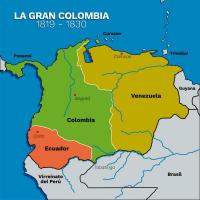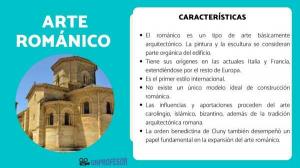7 most important works of CUBISM
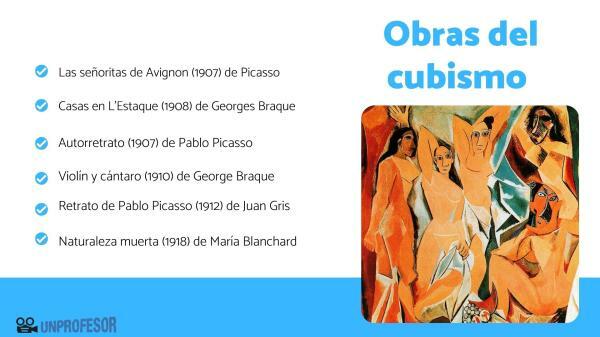
The cubism constitutes one of the artistic avant-garde movements of the 20th century, extending chronologically between 1907-1917. This art movement was named after the critic louis vauxcelles who, after visiting an exhibition by Georges Braque, defined the works as “cubic bizarreries”. But cubism went beyond geometry and what was sought was to offer all possible points of view from which to observe an object.
In this lesson at unPROFESOR.com we offer you a selection of the most important works of cubism so you can distinguish its main characteristics, authors and topics.
Index
- Main characteristics of cubism
- Les Demoiselles d'Avignon (1907) by Pablo Picasso, one of the best works of Cubism
- Houses at L'Estaque (1908) by Georges Braque
- Self Portrait (1907) by Pablo Picasso
- Violin and Pitcher (1910) by George Braque
- Portrait of Pablo Picasso (1912) by Juan Gris
- Still Life (1918) by Maria Blanchard
- The Red Tower (1913) by Robert Delaunay
Main characteristics of cubism.
Before presenting you the most important works of cubism, we are going to learn more about this artistic movement of the vanguards.
The characteristics of cubism most prominent are the following:
- Cubist artists were influenced by painters such as Gauguin or Cezanne, the eIberian sculpture and African art.
- They leave out perspective.
- They do not try to copy nature.
- They represent the objects from multiple points of view, dividing them into facets and joining them to present an abstract form.
- The shapes are geometric.
- The drawing presents hard lines.
- Are avant-garde, but they opted to continue with classic genres such as landscapes, portraits, still lifes, etc.
Les Demoiselles d'Avignon (1907) by Pablo Picasso, one of the best works of Cubism.
The Avignon ladies, although its real title is The ladies of Avinyó street (Barcelona), is one of the most iconic works of Picasso and cubism. And it is because it includes all the characteristics of the movement, constituting its starting point.
The painting is a groundbreaking work both for the theme, represents the interior of a brothel, as for the deformation of the figures, leaving aside the classical models and social conventions. It is an oil on canvas measuring 243.9 x 233.7 cm in which Picasso represents five prostitutes from that brothel, portraying them according to the principles of cubism and turning the figures into angular planes.
The main influences that can be seen in the work are Cezánne's paintings of bathers, primitive art, especially African masks, and the artistic style of El Greco.

Houses at L'Estaque (1908) by Georges Braque.
Georges Braque and Pablo Picasso were the founders of the cubist movement and in this frame, Houses in L'Estaque, the first represents an urban landscape in which the houses are cubes and there is no perspective and depth is achieved thanks to shading.
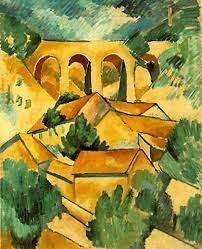
Self-portrait (1907) by Pablo Picasso.
This is another of the most important and popular works of cubism as it is represented in it Picasso following all the keys of cubism. Thus, the artist leaves aside realism and represents himself with angular, square shapes, ocher colors and marked lines.

Violin and Pitcher (1910) by George Braque.
Violin and pitcher is a work belonging to the so-called analytical phase of cubism. The painter represents two multifaceted objects, fragmented and deconstructed, completely breaking away from the classical standard of perspective. The tones used are neutral.
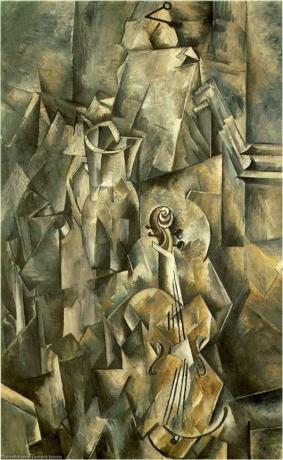
Portrait of Pablo Picasso (1912) by Juan Gris.
John Gray He made this work in the early years of the movement's emergence and expansion, being the first Cubist work by an artist not belonging to the founding nucleus.
Gris represents Picasso with his painter's palette, being very recognizable despite the decomposition of the figure into geometric shapes.

Still Life (1918) by Maria Blanchard.
Mary Blanchard is another of the non-founding artists of the movement that managed to leave a mark for the special touch he gave to his works. Blanchard brought more emotion to his works through the use of a richer and more varied color range.
In this work, María Blanchard reproduces a table and various objects broken up into angles, managing to provide expressiveness and volume thanks to the use of material or pasty paint.
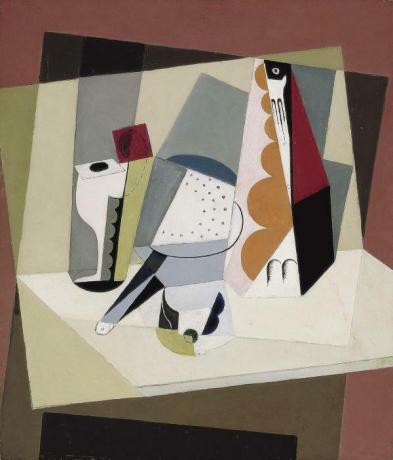
The Red Tower (1913) by Robert Delaunay.
The Eiffel Tower, Built for the Universal Exhibition in Paris in 1889, it became a symbol of modernity and, for Delaunuy, of a global Europe. In this painting, the painter used basic geometric shapes and a reduced color palette to make the tower an icon.
Thus, the tower is represented dynamically, showing it from different points of view and capturing different impressions. A representation that the author made from memory as he was not in Paris at the time.

If you want to read more articles similar to Most important works of cubism, we recommend that you enter our category of History.
Bibliography
- CARITX, Roser. Picasso and cubism. Classroom of educational innovation, 2016, no 253, p. 69-73.
- CIRLOT, Lourdes. First artistic avant-gardes. Labor, 1994.
- COTTINGTON, David. Cubism: Movements in Modern Art (Tate Gallery Series). Encounter, 1999.
- GOLDING, John. Cubism: A History and Analysis, 1907-1914. Anaya-Spain, 1993.
- HARRISON, Charles; FRASCINA, Francis; PERRY, Gill. Primitivism, cubism and abstraction. Akal Editions, 1998.
- MATAMORO, Blas. Apollinaire, Picasso and poetic cubism. Hispano-American Notebooks, 1991, no 492, p. 29-38.
- TORRES, Miguel Angel Gamonal. WILLIAM RUBIN. Picasso and Braque. The invention of cubism. With a documentary chronology elaborated by Judith COUSINS. Barcelona, Polígrafa, 1991, 422 pp., illust. Art notebooks of the University of Granada, 1993, p. 354-356.

